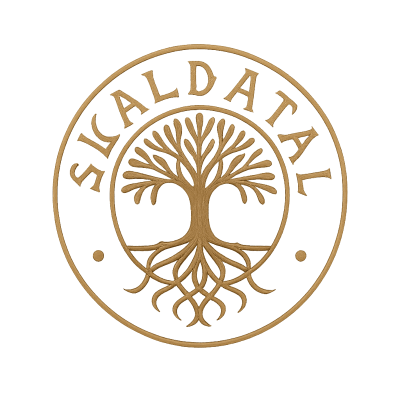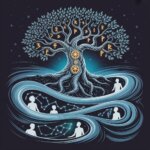The Importance of Time and Genealogy in Norse Lore
In the rich tapestry of Norse mythology, the concepts of time and genealogy are not just foundational but tell a story of cosmic significance. These elements not only provide a framework for the mythology’s narrative structure but also offer insight into the beliefs, values, and worldview of the Norse people. Understanding the timelines and genealogical connections between the gods, giants, and heroes helps to clarify the complex relationships and events that shape Norse myths. Throughout this post, we will delve into how these aspects are interwoven within the mythical narratives and explore their significance.
Timelines in Norse Mythology
Time in Norse Mythology is cyclical, a concept that is both intriguing and complex. This cyclical perspective is embodied in the myth of Ragnarök, the prophesied apocalypse that also allows for rebirth and renewal. Before Ragnarök, the timeline includes the creation of the world, the era of the gods’ adventures, and the interactions between gods and mortals. After Ragnarök, a new world rises from the sea, free from the old chaos and conflict, beginning a new cycle of time. This perspective on time reflects the Norse understanding of the natural world, seasons, and agricultural cycles—death in winter followed by rebirth in spring.
Genealogies of the Gods
The genealogies in Norse mythology are not merely lists of names but are integral to understanding the nature and the inherent characteristics of the gods and other mythical beings. For instance, Odin, the chief of the Aesir, is a descendant of Ymir, the primordial giant, which adds a layer of complexity to his character. Similarly, the lineage of the Vanir gods, who are associated with fertility and wellbeing, contrasts with that of the Aesir, who are more connected with war and governance.
The Aesir Family Tree
The Aesir, one of the two main families of gods, include key figures such as Odin, Thor, and Frigg. Odin, father to many gods, including Thor, Baldr, and Víðarr, highlights the interconnections between major events and personalities in mythology. Each relationship adds depth and meaning, influencing various myths and stories where these gods play central roles.
The Vanir Lineage
In contrast, the Vanir are a group of gods associated with fertility, wisdom, and the ability to see the future. Notable members include Njörd, Freyr, and Freyja. The marriage alliances between the Aesir and Vanir, such as Njörd’s marriage to the giantess Skadi, are pivotal as they signify the blending and balance of different cosmic and thematic elements within the mythology.
Connecting Timelines and Genealogies
Timelines and genealogies in Norse mythology are deeply connected. The events that unfold across the mythical timeline are often consequential to the relationships established by the genealogy of the gods. For example, the death of Baldr, a key event preceding Ragnarök, is profoundly affected by the familial tensions and dynamics within the Aesir. These connections highlight the inevitability and intertwined fate of the gods leading to the end of the world, as prophesied.
Conclusion: The Cosmic Weave
The cyclical timelines and intricate genealogies in Norse mythology are crucial for more than just understanding the sequence of events or relationships among characters. They illustrate a world view that embraces the cyclic nature of life and the importance of family and heritage. This perspective not only mirrors the seasonal changes central to agrarian life but also enriches the mythological narrative, offering a profound insight into the ancient Norse psyche and their understanding of the universe’s fabric.
Through studying these patterns, we gain not just knowledge of ancient stories but also a perspective on how the Norse viewed the world around them—a view where everything is connected, and every end leads to a new beginning.

